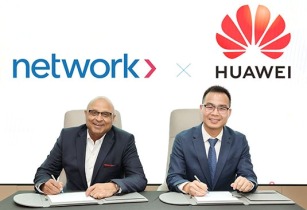In 1995, there were more telephone lines in New York City than in the whole of the African continent. This fact, sadly, remains a reality of the region even today.p>In 1995, there were more telephone lines in New York City than in the whole of the African continent. This fact, sadly, remains a reality of the region even today.
With this in mind, one of the biggest challenges faced by the governments in the many countries in the region is how to bridge the infrastructure gap that prevents the continent from aligning itself fully with the 21st century. Data published by the International Telecommunications Union (ITU) shows that more than half of African countries cannot claim a teledensity of more than one per cent, when it is often accepted that a teledensity above 20 per cent is required to support the economical and social activities of a country in its transformation into a modern economy. Reducing the infrastructure deficit in Africa is therefore an enormous task.
Climbing the technological learning curve
Having said that, there is an often overlooked benefit in being a late comer to the telecommunications frontier - leapfrogging technologies, and climbing the technological learning curve much faster than the more developed markets.
A critical element, particularly when one looks at Africa, is to focus on building an optimal future-proof telecom infrastructure that can support the continent’s needs now and well into the future.
Future-proof, next-generation networks (NGN) offer a reliable means to leverage existing investments to provide needed flexibility for growing bandwidth demands.
By building wireline or wireless broadband networks according to standards and by linking expenditures to revenues, with an eye toward the future and scalability, operators in Africa can meet unique needs and reduce one of the key elements of a network’s business case - its total cost of ownership (TCO).
Additionally, NGNs support the deployment of advanced services to be launched when market conditions are ready, according to operators’ pace and budget. The key is not only building more efficient networks, but also focusing on the networks’ long-term robustness.
Turnkey solutions are a good compromise as experienced vendors can assist in overall network and service planning, design and network management. Through a strong relationship with their vendors - a partnership, so to speak, operators can more effectively identify business prospects and service opportunities for long-term planning.
Serving the region
With the imminent explosive growth in Africa’s telecom market, a number of vendors, including ECI Telecom, have expanded their presence to serve the region better.
As a global provider of networking infrastructure solutions optimised for NGN migration, ECI has taken a prominent role, offering forward-thinking networks with supporting services and programmes.
ECI’s business framework is grounded by the need to provide operators with an optimised migration path to NGN and a fully integrated “build as you grow” approach.
ECI has recently announced two significant regional wins in NGN deployment - Togo Telecom and Access Kenya. Togo Telecom is the incumbent fixed line operator in that country. Its selection of ECI led to the first fibre-to-the-curb (FTTC), high-speed network in the region supporting Internet access, VoIP and IPTV services.
The deployment enables Togo Telecom to provide customers with high-bandwidth services over a wireline network with IP/MPLS and SDH technology delivering flexibility, while taking into account the rapid change in technology and the needs of customers.
The deployment has allowed Togo to transition from a ‘single play’ provider of voice services, to a ‘multi play’ provider - transforming and strengthening Togo’s competitive positioning in the local market.
Internet service provider Access Kenya selected ECI’s award-winning Carrier Ethernet platform solutions to deploy the largest all-IP metro-fibre network in
the region.
Connecting more than 250 buildings across Nairobi with 150 kilometres of fibre, the converged and scalable solution expands service offerings from VoIP to video.
In addition, the deployment also links high-capacity submarine cables and infrastructure. Positioned for expansion, the next phase of the project will offer wholesale bandwidth to other operators as well as corporate customers. The network is one of the few deployments of its kind
in Africa.
So, what does the future hold for the African telecommunications industry? There is much more potential for telecom growth in the region. Africa is experiencing enormous and rapid build-out.
Turnkey solutions will bridge infrastructure across mobile, fixed and utility markets with a mix of wireline and wireless technologies.
The need for network optimisation for sustainability and affordability will continue and, even more importantly, vendors will need to emphasise
broad offerings, placing more focus on added value.
As the market continues to develop, African operators utilising next-generation solutions will become well-positioned in the region, building upon existing infrastructure to supply the latest in technology and achieving more for less.
Itzhak Ronen, Corporate Vice President, Africa & Middle East, ECI Telecom



































